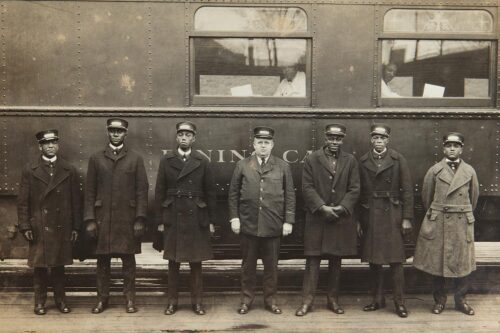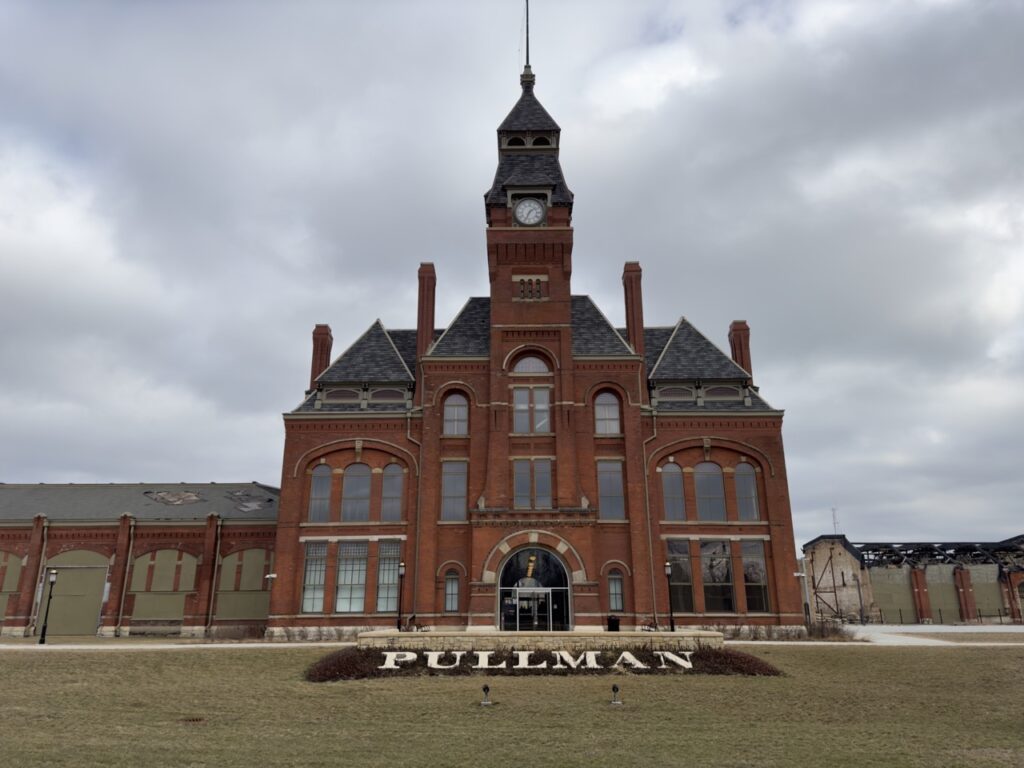
Photo taken at front administration building at Pullman National Historical Park.
It’s quite a prideful feeling to live in a city that had a significant impact and influence on the rest of the country, Chicago is a city with historical richness. The range of topics we can discuss about Chicago’s history can venture from architecture, economic development, and social issues just to name a few. There is one often overlooked part of Chicago history that had a key influence on the labor and Civil Rights Movements, which began in the Pullman neighborhood. Naturally, this story required further research…next stop was the Pullman National Historical Park. The Pullman neighborhood and the history surrounding the area covered about every historical subject you can think of, that’s when I encountered the story of the Pullman porters. A story of opportunity, discrimination, and disenfranchisement.
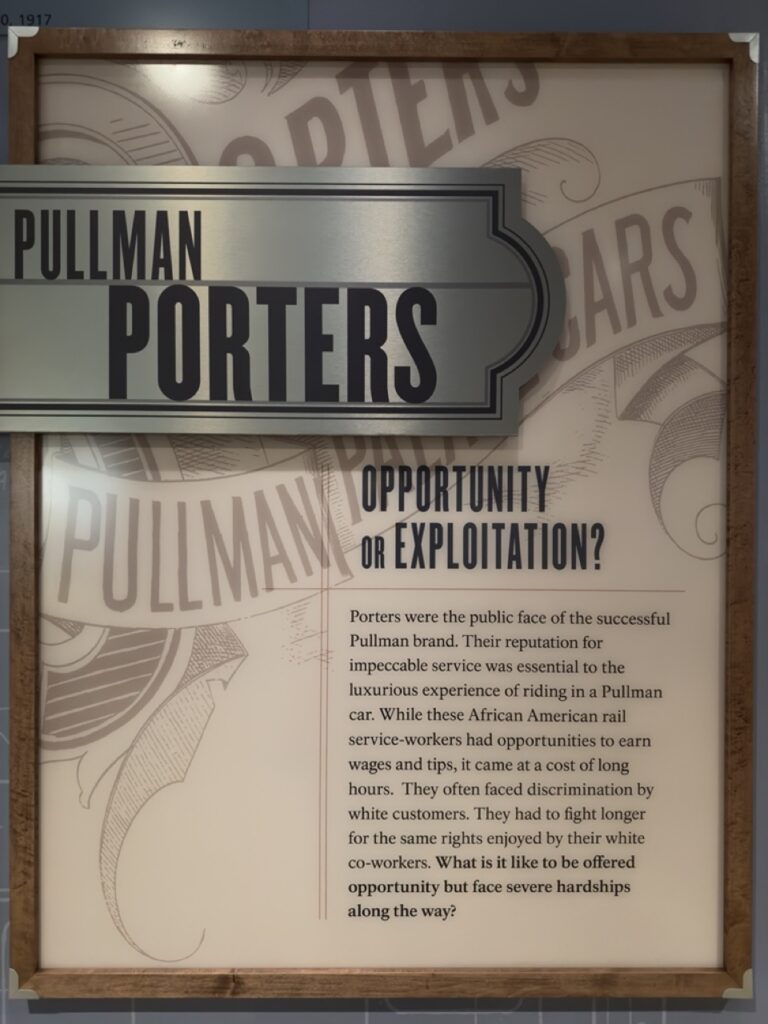
Opportunity or exploitation Photo taken at Pullman National Historical Park. |
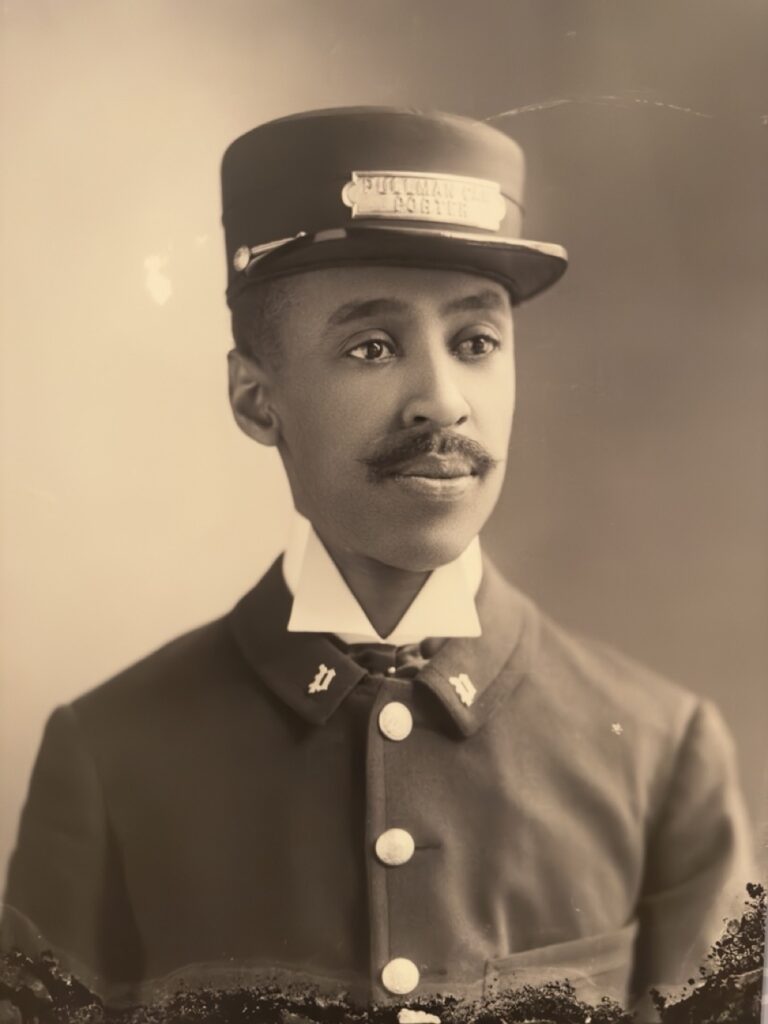
Portrait of a Pullman porter Photo taken at Pullman National Historical Park. |
The Pullman Company, founded by George Pullman in 1862, manufactured railroad cars during the mass expansion of the railroads. Prior to the 1860s, sleeping cars on the railroads were not commonly mass-produced, Pullman helped pioneered sleeping accommodations on trains. After the Civil War, Pullman knew a vast number of former slaves would be in need of work. During the Great Migration, the promise of job opportunities and a better life in the North, paved the way for African Americans looking for reasons to leave the segregated South. A few jobs in the North were not as prominent as being aboard the Pullman Cars. George Pullman hired a nearly entire African American staff, many who were former slaves, for his luxury railcars; they later become to be recognized as the Pullman porters. During the Gilded Age, Pullman trains go on to exemplify the time by providing luxury and comfort to middle-class Americans. The Pullman Company offered an experience that many middle-class Americans were not familiar with, a taste of upper class by providing them with high-end service and luxurious accommodations. The Pullman Company was sometimes referred to as a chain of hotels on wheels. Since the porters were mainly recently freed slaves, Pullman thought they would make excellent servicemen who could work long hours and for low wages.

Porters serving guests, Photo taken at Pullman National Historical Park. |

Dinnerware and menu, Photo taken at Pullman National Historical Park. |
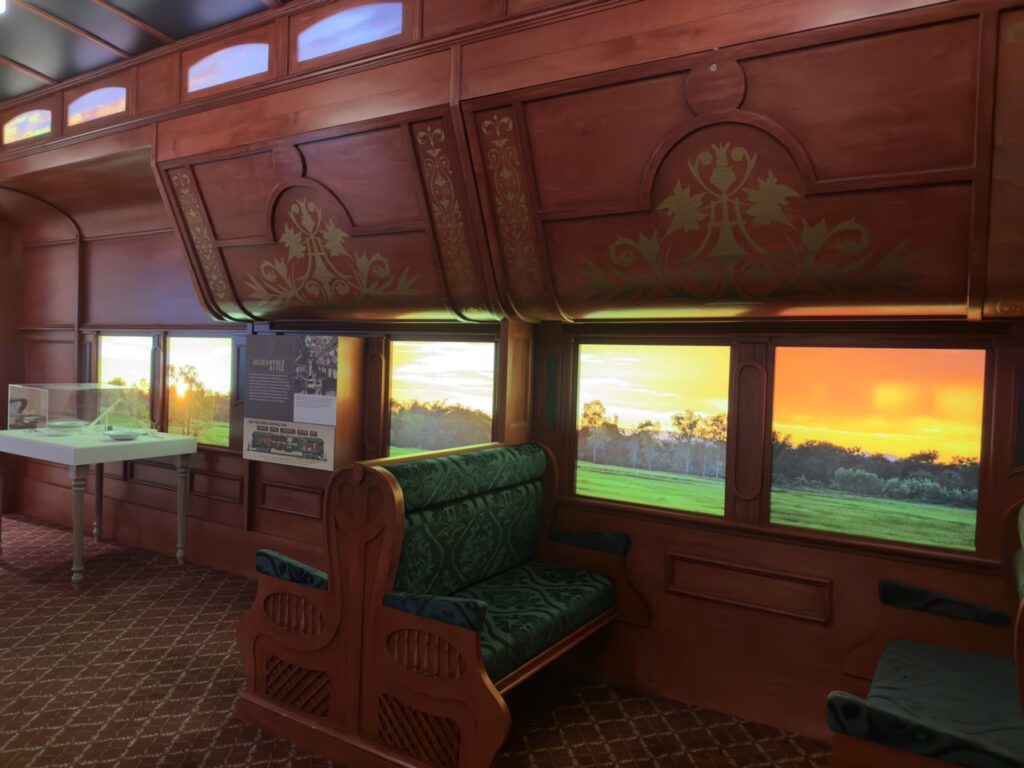
Luxury Pullman Train, Photo taken at Pullman National Historical Park. |
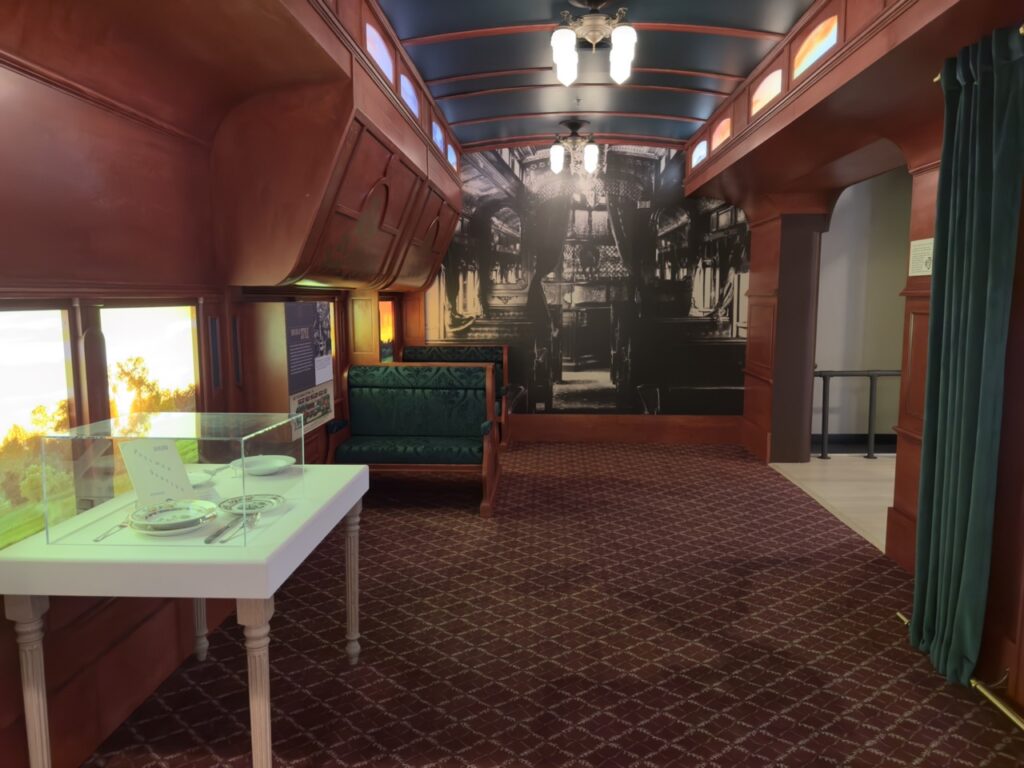
Luxury Pullman Train, Photo taken at Pullman National Historical Park. |
The job of a porter was not as opulent as it appears. The Pullman porters were not paid a livable wage compared to their white counterparts, so they mostly relied on tips. They would frequently work double shifts and were required to pay for their own uniforms, meals, and accessories like shoe polish to shine the customer’s shoes. The porters were even obligated to pay for any broken tableware and stolen items caused by passengers. While the Pullman cars had lavish sleeping quarters, the porters did not have berths of their own and were only permitted to take naps on the couches when they were not in use. The Pullman Company also employed maids, who were mostly made up of Black American women, they were at times referred as “handmaidens for travelers” and often endured harassment and constant scrutiny aboard the trains. The Pullman Company soon became the largest employer of Black American men in the country, with the majority of them coming from the South Side of Chicago.
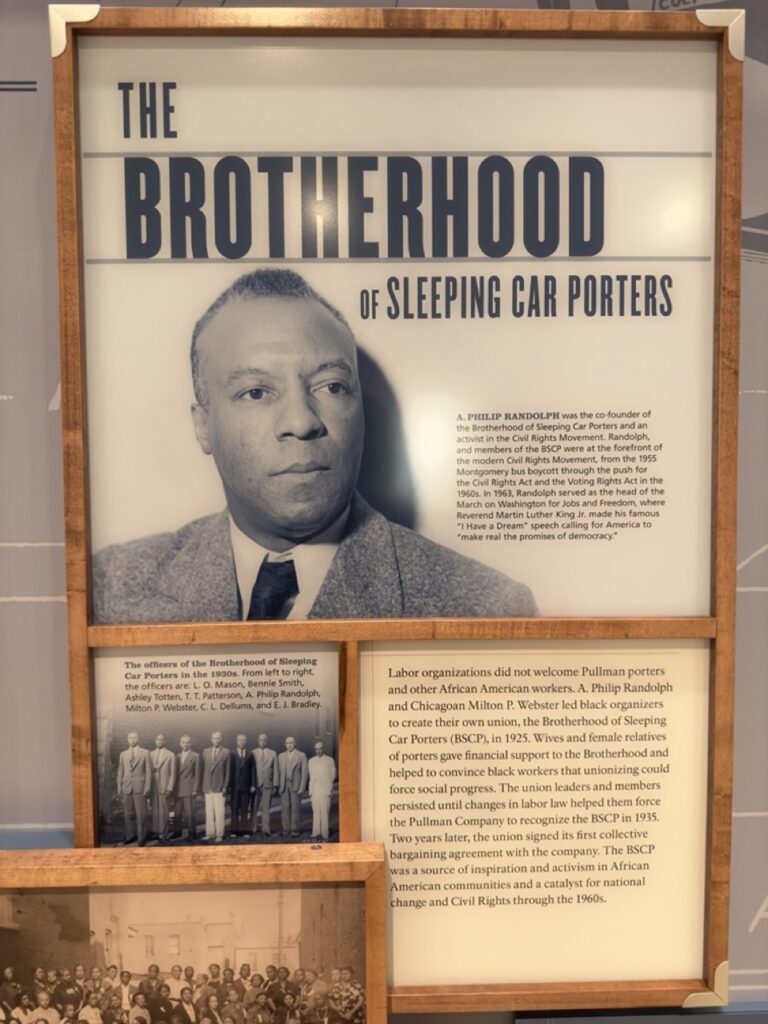
Brotherhood of Sleeping Car Porters Photo taken at Pullman National Historical Park. |

Porter attending guest Photo taken at Pullman National Historical Park. |
The Pullman porters were tired of poor working conditions, they planned their first attempt to unionize in 1909, but were met with quick opposition from the Pullman Company who refused them to organize. They attempted to unionize again on August 25, 1925, A. Philip Randolph began organizing the Brotherhood of Sleeping Car Porters with the motto “Fight or Be Slaves.” Under Randolph’s leadership of the first black union, the Brotherhood of Sleeping Car Porters gradually improved working conditions and salaries. With the forming of the first black labor union, the Pullman porter laid the groundwork for the Civil Rights Movement. Union organizer and former Pullman porter E. D. Nixon played a critical role in organizing the Montgomery bus boycott in Alabama in 1955. Nixon was the one who bailed Rosa Parks out of jail, and he selected her as the figure to build the boycott around.

Pullman Porter artifacts, Photo taken at Pullman National Historical Park. |

A. Philip Randolph Pullman Porter Museum |
In 1995, Lyn Hughes founded the A. Philip Randolph Pullman Porter Museum to commemorate the life of A. Philip Randolph and the undertaking of the Brotherhood of Sleeping Car Porters in the U.S. labor movement. The original row houses that were built by George Pullman to house workers is part of the U.S. Department of the Interior’s Pullman National Historic Landmark District. The museum is home to an assortment of artifacts and documents that relates to the Brotherhood of Sleeping Car Porters. The accomplishments of the Pullman porters during the Great Migration became an essential part to the history of Chicago and its development of forming a new Black middle class. Their legacy would go on to be of distinction, toughness, and conscientiousness in the Black community across the country.

The Pullman National Historical Park entrance sign |

Park Ranger Sarah Buchmeier |
It’s highly recommended to visit the Pullman National Historical Park to learn more about the history of the Pullman neighborhood and its lasting impact, which is located on the far south side of Chicago at 610 E. 111th Street, Chicago, IL 60628. For more information, please visit www.nps.gov. The friendly and helpful National Park Service staff will make sure your visit is enjoyable and informative.
References:
Early Chicago: Pullman Porters. WTTW Chicago. (2019, December 16). Retrieved February 18, 2023, from https://interactive.wttw.com/dusable-to-obama/pullman-porters
McKibben, R. (2021, February 18). A tale of today: Up from the ashes – pullman porters and the Great Migration. A Tale of Today: Up From the Ashes – Pullman Porters and the Great Migration | Driehaus Museum. Retrieved February 18, 2023, from https://driehausmuseum.org/blog/view/pullman-porters



